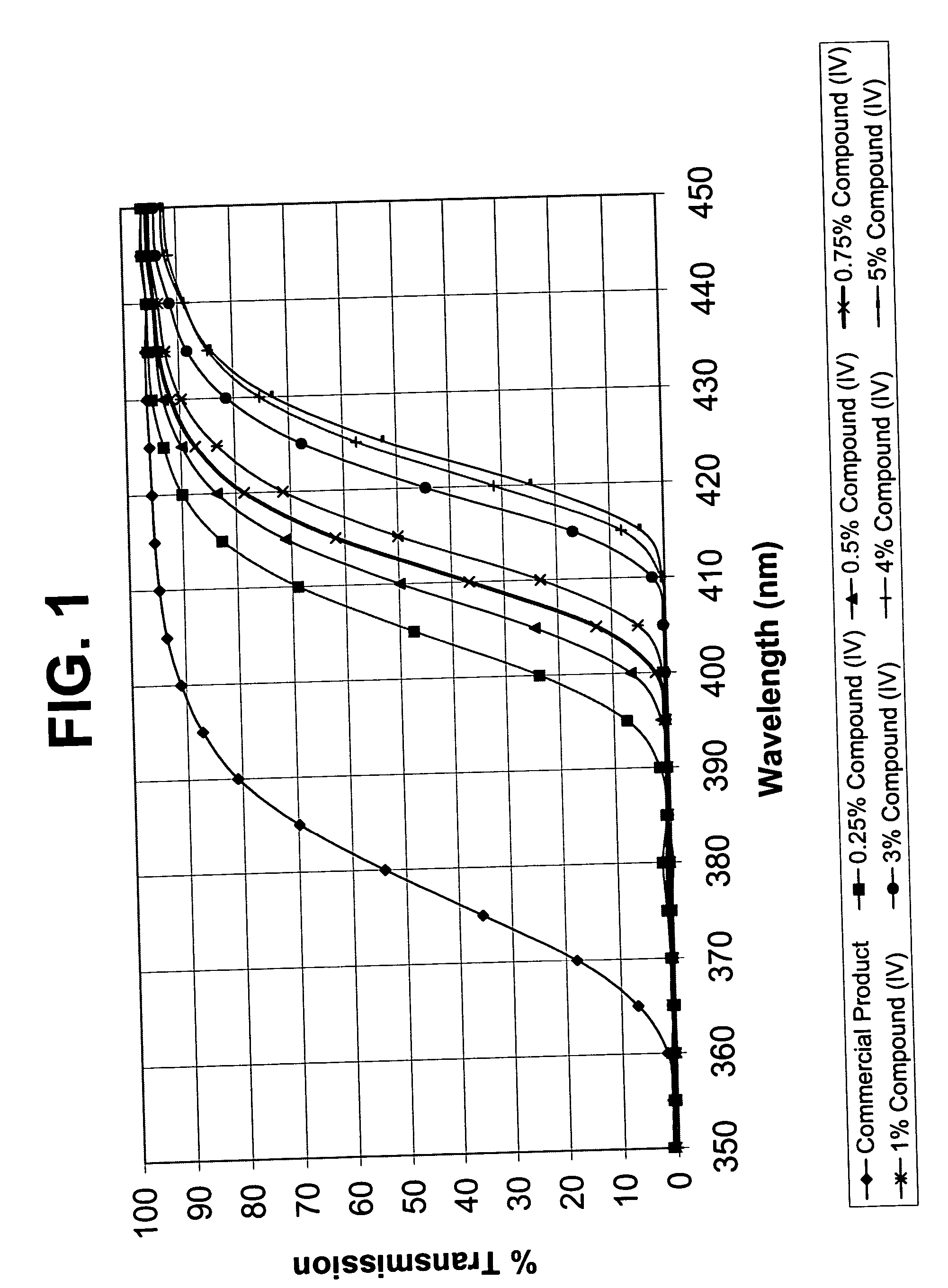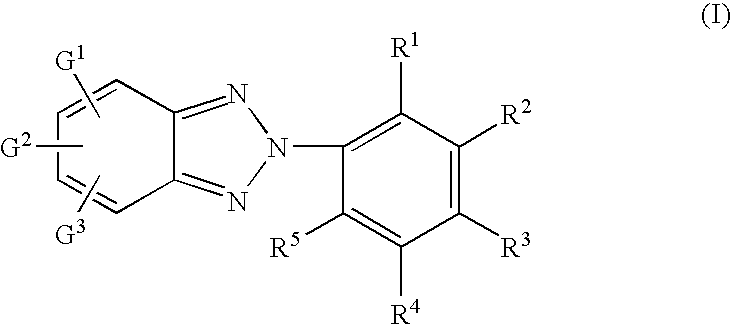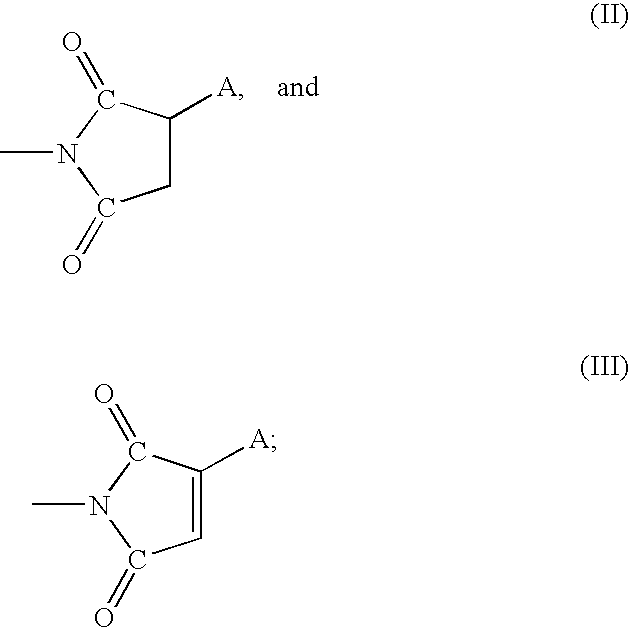Radiation-absorbing polymeric materials and ophthalmic devices comprising same
a technology of polymeric materials and ophthalmic devices, applied in the direction of optical elements, instruments, organic chemistry, etc., can solve the problems of incompatible with normal vision, retina no longer protected from the damaging effect of uv-a radiation, and more harmful than blue ligh
- Summary
- Abstract
- Description
- Claims
- Application Information
AI Technical Summary
Problems solved by technology
Method used
Image
Examples
example 1
Preparation of UV-A Radiation- and Violet Light-Absorbing Copolymers Containing Benzotriazole
[0041] The following ingredients were mixed together in a container using a magnetic stirrer at ambient temperature in air for about 1-2 hours: 80 parts 2-hydroxyethyl methacrylate (“HEMA”), 20 parts methyl methacrylate (“MMA”), 0.1-0.6 part ethylene glycol dimethacrylate (“EGDMA” as crosslinker), 0.5 part Lupersol™ 256 thermal polymerization initiator [2,5-dimethyl-2,5-bis-(2-ethyl hexanoylperoxy)hexane], from Elf Atochem, Buffalo, N.Y.), and an amount of the benzotriazole compound of Formula (IV) at a level of 0.25, 0.5, 0.75, 1, 3, and 5 percent (by weight of the total mixture). The mixture was then purged with nitrogen for about 5 minutes, and rods were cast having diameter of about 1 cm. The polymer was cured according to the following temperature program: 25-40° C. for 60 minutes, 40° C. for 6 hours, 40-63° C. for 5 hours, 63° C. for 3 hours, 63-97° C. for 5 hours, 97° C. for 8 hours,...
PUM
| Property | Measurement | Unit |
|---|---|---|
| Temperature | aaaaa | aaaaa |
| Fraction | aaaaa | aaaaa |
| Fraction | aaaaa | aaaaa |
Abstract
Description
Claims
Application Information
 Login to View More
Login to View More - R&D
- Intellectual Property
- Life Sciences
- Materials
- Tech Scout
- Unparalleled Data Quality
- Higher Quality Content
- 60% Fewer Hallucinations
Browse by: Latest US Patents, China's latest patents, Technical Efficacy Thesaurus, Application Domain, Technology Topic, Popular Technical Reports.
© 2025 PatSnap. All rights reserved.Legal|Privacy policy|Modern Slavery Act Transparency Statement|Sitemap|About US| Contact US: help@patsnap.com



